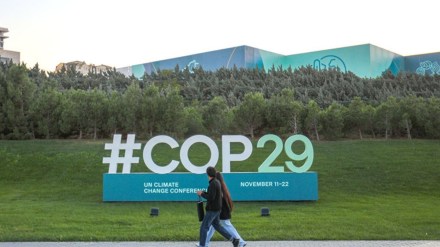By Krithika Ravishankar and Anasuya Gangopadhyay
At the 29th session of the Conference of the Parties (COP29), India voiced its disappointment at the climate finance announcement of $300 billion annually under the New Collective Quantified Goal (NCQG), and rightly so. This goal was being negotiated to enhance the Global North’s financial pledges to support the Global South in tackling climate-related issues. However, the final commitment fell drastically short of the $1.3 trillion/year demand of the Global South, indicating a clear lack of consideration of equity and common but differentiated responsibilities and respective capabilities (CBDR-RC) —fundamental to the spirit of the Paris Agreement.
Adequate financial resource allocation is a constraint in designing the Global South’s energy transition trajectory. Existing nationally determined contributions (NDCs) are insufficient to limit the global temperature rise to 1.5°C, and ramping up of ambition by the developing nations hinges on climate finance flow from developed countries. Preliminary financial estimations in NDCs indicate that India alone needs over $2.5 trillion to meet its climate mitigation goals by 2030. So far, India has been financing climate actions domestically through national funds, scheduled commercial banks, non-banking financial companies, venture capital funds, alternate investment funds, corporate bonds, green bonds, and domestic private investments. This falls short, given the developmental goals that are yet to be met in India.
International support is therefore warranted to meet the climate finance requirements of countries such as India. The developed world, however, has repeatedly failed to meet its commitments and is now unilaterally imposing measures like the European Union’s Carbon Border Adjustment Mechanism (CBAM). These measures effectively reverse the intended flow of climate finance (from developed to developing countries). Our analysis indicates that CBAM implementation could cost India ∼ Rs 38 billion in GDP loss, exacerbating financial strain and undermining the CBDR-RC principle.
Developed countries have provided climate finance mainly through loans, increasing the debt obligations of recipient countries. This is despite repeated pushback from the Global South at successive COPs and persistent demands for a greater share to be allocated as grants/concessional funding. Even so, the COP29 NCQG commitment of a meagre $300 billion can come from various sources including loans and private investments, not just public grants.
Also read: Most SMEs reluctant to invest in sustainability: Survey
Securing loans is a concern because credit risk hinders disbursement, exacerbating debt obligations. De-risking is, therefore, another critical issue. Although various credit guarantee mechanisms can address this risk, the expensive nature of these instruments, complicated processes, rigidity, insufficient awareness, and sluggish decision-making from multilateral institutions and governments impede their adoption, delaying the energy transition.
Plurilateralism—negotiations in which a part of a group mutually agrees to a goal that is hindered by other members of the larger multilateral group—can provide an avenue to overcome such financial constraints. The Paris Agreement’s voluntary nature lends itself to the use of plurilateralism to negotiate climate finance transfers, as no post-Paris COP could arrive at a consensus regarding multiple aspects of implementation like stringency of NDCs and regulations governing the global carbon market. For example, early on at COP29, the Supervisory Body constituted under Article 6 of the Paris Agreement fast-tracked the adoption of global carbon market standards, circumventing any in-depth discussion and effectively forcing a multilateral consensus. This type of coercion can be avoided by adopting plurilateralism, which is already ‘baked into’ the Agreement, evidenced by provisions encouraging cooperation among sub-groups for technology transfer and transference of mitigation outcomes.
Free riding is a possible risk of plurilateralism but is unavoidable, particularly for a treaty like the Paris Agreement, considering the non-excludable and non-rivalrous nature of a global good like climate change mitigation.
The window to action to address climate change is shrinking. There is an urgent need to mobilise both public and private resources to ensure adequate financing. Since waiting for multilateral consensus among all parties on financing is time consuming, as demonstrated across multiple COPs, adopting a plurilateral approach to negotiating NCQGs could ensure adequate financing for countries like India to transition towards low-carbon development.
Climate finance should not be viewed as a charitable act but a fundamental necessity for every nation to protect its economy and population from climate change impacts.
(The authors work in the Climate Change Mitigation group at the Center for Study of Science, Technology and Policy [CSTEP], a research-based think tank. Views expressed are the authors’ own and not necessarily those of financialexpress.com.)
